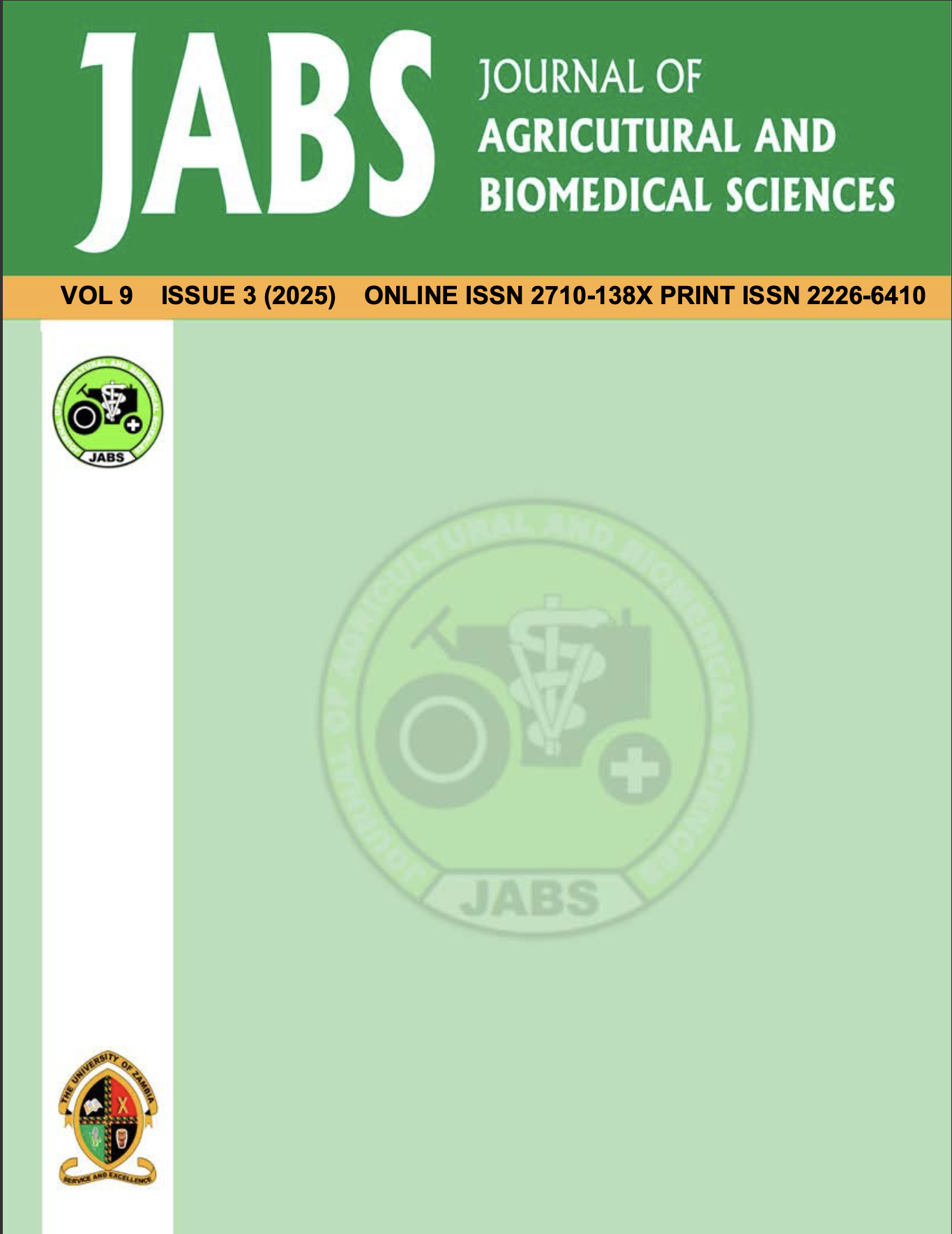Phytochemical composition and Di-phenyl picryl hydrazil (DPPH) radical scavenging activities of some essential oils
Abstract
Essential oils, derived from aromatic plants are known for their antioxidant and bioactive properties. They have shown promise in inhibiting lipid oxidation and conferring functional properties to food products. This research was carried out at the Animal Products and Processing Laboratory, Department of Animal Science, University of Ibadan; it was designed to examine the phytochemical composition and radical scavenging activities of selected essential oils as potential bioactive and antioxidant additives in edible products. Four different essential oils namely; Cinnamon bark essential oil (CEO), Oregano essential oil (OEO), Thyme essential oil (TEO) and Lemon essential oil (LEO) were selected for this study and obtained from a reputable processor. The selected oils were subjected to evaluation of phytochemical composition and Di-phenyl picryl hydrazil (DPPH) radical scavenging activities using standard procedures. Phytochemical analysis revealed the presence of saponin, alkaloid, flavonoid, tannin and reducing sugar in the oils. Tannin and alkaloid were highest in Cinnamon oil and lowest in Thyme oil. While flavonoid was highest in Lemon oil and lowest in Cinnamon oil. Reducing sugar was highest (7.28) in Thyme oil and lowest in Oregano oil. DPPH was highest (75.07%) in Thyme essential oil and lowest in Cinnamon bark essential oil (70.31%) while values for oregano essential oils and lemon essential oils are (73.42% and 68.29%). Cinnamon essential oil had the highest tannin, alkaloid, and saponin content (which play key roles in antioxidation). DPPH analysis however showed that thyme essential oil as potentially stronger in inhibiting lipid oxidation, among the evaluated oils. Thus, it is concluded that thyme essential oil and cinnamon essential oil are more likely to reduce lipid oxidation and improve food functionality. Researchers in food processing could focus on the synergistic effects of thyme and cinnamon essential oil in reducing lipid oxidation and improving functional properties of food.
Published
2025-08-07
How to Cite
1.
Adediran O, Hamzat A, Faniyi T, Jegede O. Phytochemical composition and Di-phenyl picryl hydrazil (DPPH) radical scavenging activities of some essential oils. Journal of Agricultural and Biomedical Sciences [Internet]. 7Aug.2025 [cited 3Oct.2025];9(3). Available from: https://journals.unza.zm/index.php/JABS/article/view/1302
Section
Agriculture Sciences

This work is licensed under a Creative Commons Attribution 4.0 International License.
Copyright: ©️ JABS. Articles in this journal are distributed under the terms of the Creative Commons Attribution License Creative Commons Attribution License (CC BY), which permits unrestricted use, distribution, and reproduction in any medium, provided the original author and source are credited.
